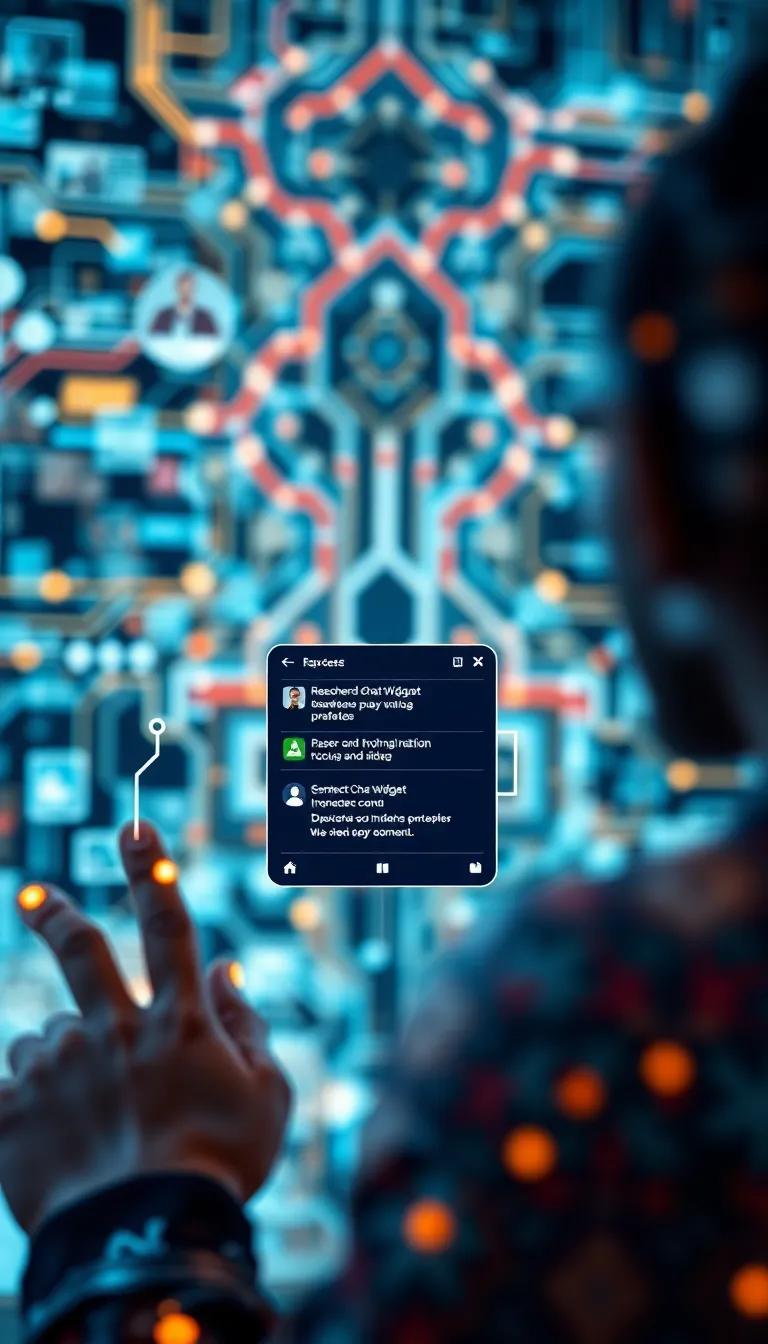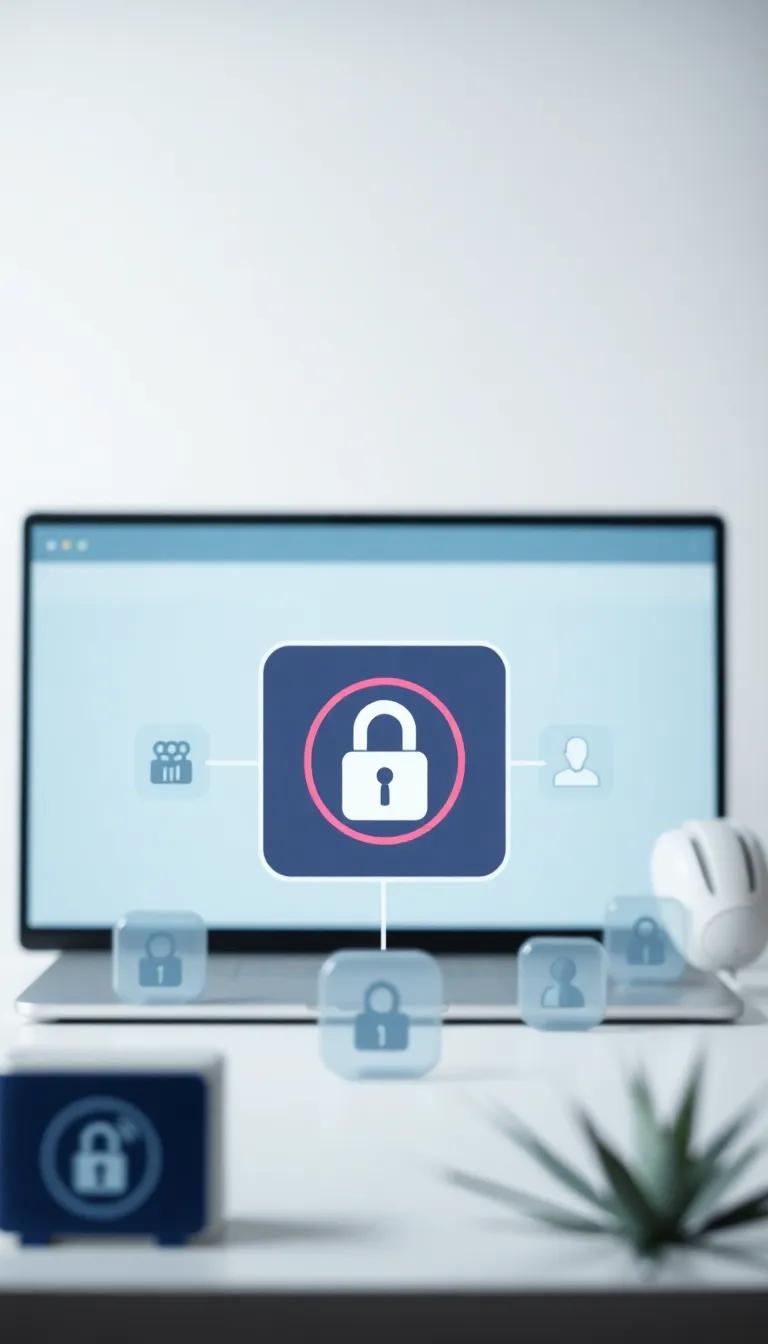Introduction
The landscape of digital communication has evolved, with market trends increasingly shaping the effectiveness and utility of free website chat widgets. These tools not only enhance user experience but also serve as a vital resource for businesses looking to engage visitors in real-time. As online interactions become more prevalent, understanding the market trends that influence the free website chat widget sector is crucial for companies aiming to leverage these tools to their advantage.
In recent years, shifts in consumer behavior, advancements in technology, and the rising importance of customer support have driven significant changes in the free website chat widget market. This article delves into key market trends, exploring their implications for businesses and users alike. By identifying these trends, companies can make informed decisions about the adoption and implementation of chat widgets, ensuring they remain competitive in an increasingly crowded digital marketplace.
The Evolution of Market Trends Shaping the Free Website Chat Widget Landscape
The journey of market trends in the free website chat widget industry reflects a dynamic interplay of technological advancements and evolving consumer expectations. The inception of the internet in the late 20th century, characterized by static web pages, offered minimal interaction with users. Early attempts at communication were often limited to email, creating a somewhat one-dimensional relationship between businesses and customers.
As the internet matured throughout the 2000s, so too did the landscape of digital communication. The introduction of instant messaging platforms fundamentally altered user expectations for real-time interaction. Businesses began to recognize the value of engaging customers promptly, leading to the emergence of live chat features on websites to facilitate immediate communication. This decade marked a pivotal moment; not only did businesses adopt these tools, but consumer behavior started shifting towards a preference for instant connectivity, making it a critical component in customer service strategies.
With the advent of smartphones in the 2010s, the demand for communication convenience exploded. Users now sought seamless interactions across devices, and chat widgets adapted to deliver mobile-optimized experiences. This phase represented a significant evolution, as chat functions began to integrate artificial intelligence, such as chatbots, enabling organizations to provide 24/7 service at reduced costs. As businesses looked towards improving customer experience, automated responses became an essential aspect of service delivery.
In the latter part of the 2010s and into the early 2020s, the trend towards personalization surged. Chat widgets evolved from generic interfaces to sophisticated tools capable of contextualizing conversations based on user data. Marketing strategies started to focus on creating tailored experiences, which proved effective in enhancing user satisfaction and brand loyalty. The focus on user experience played a crucial role in driving the development of features such as proactive chat invitations and personalized recommendations during interactions.
As the market approaches a more data-driven future, the influence of privacy and data regulation significantly shapes the free website chat widget industry. Businesses are increasingly aware of the need to balance personalization with user consent, prompting a shift towards transparent data practices. This evolution highlights the ongoing necessity for chat widgets to adapt, prioritizing both user experience and ethical considerations.
Consumer Behavior and Expectations Influencing Market Trends for Free Website Chat Widgets
Shifts in Consumer Behaviors
As the digital landscape continues to evolve, consumer behaviors are undergoing significant transformations that directly influence the market trends for free website chat widgets. Modern consumers are increasingly seeking immediate responses and seamless interactions, making real-time communication a critical expectation. The traditional interactions via email or contact forms are perceived as slow and inefficient, leading consumers to favor platforms that offer dynamic engagement. This shift underscores a growing demand for instant support, where consumers expect businesses to be available around the clock to address their inquiries.
Expectations for Real-Time Communication
In an age where instant gratification is the norm, consumers have developed high expectations regarding responsiveness. The integration of chat widgets on websites has become a key element in meeting these demands. Users anticipate not just a quick reply but also an intuitive and personalized interaction experience. They prefer chat services that can understand their needs and provide relevant answers without delay. This has given rise to sophisticated free chat widgets that facilitate quick exchanges, enhancing consumer satisfaction and fostering loyalty.
As consumers become more tech-savvy, their expectations expand to include features such as automated responses, multi-channel integration, and support for common inquiries. For instance, a shopper browsing an e-commerce site may expect to receive immediate assistance via chat when encountering difficulties, rather than navigating through a cumbersome FAQ section. To meet these heightened expectations, businesses are adapting their chat widget functionalities to provide more than just a platform for communication; they are enhancing it to act as a virtual assistant that guides users through their journey.
A big change is how people use their phones to browse the web. Since a lot more folks are checking out websites on their mobile devices, chat widgets need to work well on those screens too. It’s not just about looking good; it’s also about making sure everything runs smoothly so users can chat and get things done without any hassle whether they’re on a computer, tablet, or phone.
As we witness these changing dynamics in consumer behavior and expectations, it becomes evident that businesses leveraging advanced chat features stand to gain a competitive edge. Embracing these trends is essential for companies aiming to enhance their customer service capabilities and adapt to the evolving digital communication landscape.
Integration of Advanced Technologies in the Free Website Chat Widget Industry
The Role of AI and Machine Learning
The integration of cutting-edge technologies like artificial intelligence (AI) and machine learning is significantly transforming the market for free website chat widgets. These advancements enhance the functionality of chat widgets, enabling businesses to offer more sophisticated and streamlined communication channels. AI-driven tools allow chat widgets to engage visitors in real-time by understanding natural language, thereby improving the user experience.
One of the primary ways AI influences chat widgets is through the implementation of chatbots. These bots are equipped with natural language processing (NLP) capabilities, which enable them to interpret user inquiries accurately. As a result, visitors receive immediate assistance, which aligns with modern consumer expectations for instant communication. The ability to provide 24/7 customer support through intelligent bots is a game-changer for companies looking to maintain competitive advantages while also managing operational costs.
Machine learning algorithms further enhance these capabilities by continuously learning from interactions. This ongoing learning process allows chat widgets to refine their responses over time, resulting in more accurate and contextually relevant answers for users. Companies can leverage these insights not only to improve customer service but also to anticipate customer needs based on historical data and behavioral patterns. This predictive capability enables organizations to tailor their marketing strategies and service offerings more effectively.
Efficient Data Handling and Personalization
The combination of AI and machine learning facilitates improved data handling, allowing chat widgets to gather and analyze user data efficiently. By utilizing this information, businesses can personalize conversations, making interactions more relevant and engaging. For instance, knowing a visitor’s previous inquiries can help the chat widget suggest solutions or products that meet their specific needs, thus enhancing the likelihood of conversion.
Mixing in cool tech like AI and machine learning is really changing up how chat widgets work. They help you connect with people right away thanks to smart automation, make the experience more personal for users, and keep getting better all the time with machine learning. These upgrades are super important to meet what today’s consumers want. So businesses that keep up with these tech trends are setting themselves up for success down the road in a tough market.
Impact of Competition on Chat Widget Development
Competitive Pressures in the Chat Widget Market
The free website chat widget landscape is significantly shaped by competitive dynamics, which dictate how companies innovate and enhance their offerings. The saturated market requires businesses to continuously refine their features to attract users. Free chat widgets are becoming increasingly popular, leading to a race among providers to deliver unique functionalities. Companies are often compelled to analyze their competitors meticulously, identifying strengths and weaknesses, which informs their development strategies. By engaging in regular market assessments, businesses can determine what innovative features are essential for distinguishing themselves from their competitors.
Competitive pressures also foster a spirit of collaboration among vendors. With many companies recognizing the need for integration with advanced technologies, partnerships are frequently formed to pool resources and expertise. For instance, a chat widget company might collaborate with an AI provider to offer enhanced customer interaction capabilities. This tactic not only augments the product’s value but also helps establish credibility in a crowded market, allowing firms to present themselves as industry leaders in innovation.
Strategies to Differentiate Free Chat Widgets
In order to stand out in a field populated by similar offerings, companies are adopting various strategies. One prominent approach is implementing user-centric designs. Tailoring the user experience to meet specific needs can significantly enhance customer satisfaction and retention. Personalization features, such as customizable chat interfaces or tailored interactions based on user behavior, are becoming a priority for vendors aiming to capture more market share.
Companies are really putting an effort into giving great customer support these days. When they provide awesome service, it helps them connect better with their users, leading to loyalty and good old word-of-mouth referrals. Some businesses are even putting money into solid educational resources to help users get the most out of their chat widgets. This sets them apart from the competition that might just provide basic support.
Another strategy involves leveraging data analysis. By utilizing insights gathered from user interactions, companies can continually update and enhance their chat functions. This iterative approach allows for rapid improvements and adaptation to evolving consumer expectations, further solidifying a brand’s presence in the market.
Through the combination of unique feature offerings, user-centric customization, superior customer support, and data-driven enhancements, companies can navigate the competitive pressures effectively, ensuring that they remain relevant in the ever-changing chat widget environment.
Regulatory and Privacy Considerations Analyzing Market Trends Impacting the Free Website Chat Widget Landscape
Compliance Challenges in Chat Widget Deployment
The surge in the use of free website chat widgets has been significantly influenced by regulatory frameworks and privacy concerns that govern data protection. As organizations increasingly rely on these digital tools for customer interaction, compliance with laws such as the General Data Protection Regulation (GDPR) in Europe and the California Consumer Privacy Act (CCPA) in the United States has become paramount. Non-compliance can lead to hefty fines and damage to brand reputation, prompting businesses to adopt stringent data handling practices.
Organizations deploying chat widgets must ensure that any data collection, storage, and processing activities operate within the legal boundaries set by these regulations. For instance, informing users about data usage and obtaining explicit consent have become standard practices. This requirement affects the functionality and design of chat widgets, pushing developers to incorporate features that maintain transparency and ease of access for users. A growing focus on privacy-respectful practices not only protects users but also enhances brand trust.
The Role of Consumer Awareness and Demand
In conjunction with regulatory compliance, there is a burgeoning consumer awareness regarding data privacy. Users are increasingly sensitive to their online privacy, often gravitating towards companies that prioritize ethical data practices. This shift has compelled chat widget providers to innovate in ways that protect user data while ensuring seamless interactions. As a response to rising demands, many companies are integrating privacy-centric features such as customizable privacy settings and anonymous chat options, creating a competitive edge in the market.
The way rules and what customers want mix together is changing how chat widgets are being developed really fast. Developers are getting creative with solutions like making data anonymous and using end-to-end encryption to tackle privacy worries while still keeping customer support effective. These new ideas are super important for businesses that want to take advantage of real-time chats but also want to keep user info safe.
As these regulatory and privacy considerations continue to shape the chat widget market, compliance will likely dictate the future development trajectories of these tools. Companies that successfully align their solutions with regulatory demands and consumer preferences will be poised to lead in this increasingly competitive environment, signaling a clear trend towards responsible technology integration in web-based customer interactions.
Future Trends in Chat Widget Technology Analyzing Market Trends Affecting Free Website Chat Widgets
Emerging Technologies in Chat Widgets
As businesses and consumers increasingly embrace digital engagement, chat widgets are evolving to incorporate various emerging technologies. A noteworthy trend is the integration of artificial intelligence (AI) and machine learning (ML) within free website chat widgets. This development allows for personalized interactions, where chatbots can analyze user inputs in real-time and adjust responses based on previous interactions. Such dynamic capabilities enhance user satisfaction and encourage repeat visitors.
Plus, natural language processing or NLP is changing the game for how chat widgets talk to folks. With NLP, these tools can understand and create responses that feel more human, cutting down on the annoyance of dealing with bots that just don’t get it. As AI and NLP get better, we can look forward to chat widgets giving us smoother interactions that make online customer support and engagement way more effective.
Anticipated Consumer Expectations
Consumer expectations will also play a significant role in shaping the future of free website chat widgets. In the coming years, users will likely expect instant, 24/7 support from businesses. This expectation stems from an increasing preference for businesses that are reachable across multiple digital channels. Consequently, chat widgets that incorporate proactive features—such as initiating conversations based on user behavior or offering assistance before a user has to ask—will become more prevalent. This proactive engagement is expected to drive customer loyalty and improve conversion rates.
Another anticipated shift is the demand for multilingual support within chat widgets. As businesses expand their global reach, the ability to cater to diverse linguistic needs will no longer be a luxury but rather a necessity. Future iterations of chat widgets will likely incorporate translation capabilities and support for various languages, thereby enhancing accessibility for users worldwide.
The rise of integration with broader customer relationship management (CRM) systems is also on the horizon. Future chat widgets will seamlessly interact with other customer engagement tools, creating a unified approach to managing customer relationships. This integration will allow for a more holistic view of customer interactions, ultimately informing better business strategies and enhancing the overall customer experience.
Conclusions
To sum it up, there are a bunch of different trends shaking up the free website chat widget scene. Businesses need to be ready to offer quick customer support and get on board with cool tech like AI and machine learning. By staying flexible and adjusting to these changes, companies not only make things better for users but also boost customer loyalty and happiness.
To really get what’s happening in the market and make the most of free website chat widgets, companies need to pay attention to these trends. Keeping up with what’s going on helps businesses build better connections with their customers, boost engagement, and for sure, make more money in a world that’s getting tougher to compete in.


















